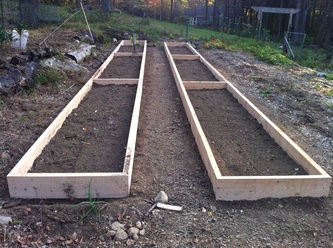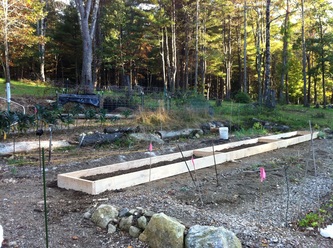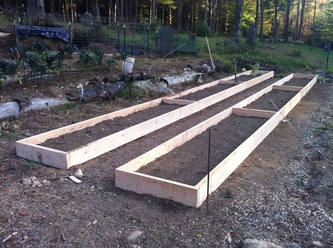|
10/12/2011 Converting Garden Rows to Raised BedsIn retaliation to the past 3 years above average rain fall which raised havoc on our plants leaving us with stunted, rotten or no harvest at all, we have decided that it is time to start investing in raised beds. The raised beds will keep the roots from getting water logged and help keep the gardens tidy. The new beds will enable us to plant grassy in the pathways to help maintain moisture and the overall health of the soil "worms, insects, microbes, etc". The beds are 3' wide by 36' long with just enough room for the lawn mower to pass down the pathways. Each bed is design with 3, 12'x3' boxes which will be outfitted with a movable 12' cold frame to extend the growing season. Garlic and onions are going into one of these beds to winter over and the other is getting cold framed in the spring for early greens. We are aiming to add an additional 3 raised beds in the spring before we plant out, for now they will be resting under a green manure crop of winter rye.
"The Hemlock lumber was locally milled and harvested from manged wood lot less then 2 miles away." Advantages of Raised Bed Gardening
7/9/2012 07:26:04 pm
I’m a long time watcher and I just believed I’d drop by and say hello there for your very first time. Comments are closed.
|
Teresa Fuller
Our monthly newsletter will cover farm news, food, markets, fairs, events and herbs. CategoriesAll Animals Baked Good Cards Farm Farm Stand Fruit Garden Gift Baskets Herbs Kitchen Receipes Recipe Recipes Store Vegetables Video Vineyard Wine |
Search by typing & pressing enter






 RSS Feed
RSS Feed